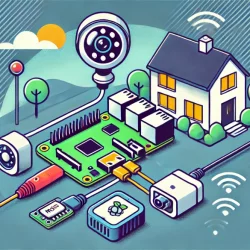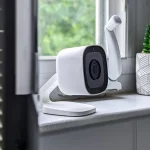Essential Safety Features to Look for in a Home Safe
When evaluating home safe safety features, it’s important to know what to prioritize for your personal security needs. A reliable safe protects your valuables from theft and unauthorized access. It is a valuable investment, giving comfort to any household.
Knowing which specific features to look for will help you choose the right safe.
Locking Mechanisms
The locking system of a safe is responsible for its role in security. Most safes have cylindrical tubes that close behind the frame of the safe, these are the most traditional. Some have revolutionary locking mechanisms which actually close and lock into the frame, making the level of possible break-in significantly more difficult. Electronic entry key pads are particularly popular for their convenience and added layer of security.
For those who prefer a more classic approach, a combination dial can also offer dependable protection but it’s a bit more cumbersome in today’s times. Assessing your preferences and potential access needs will guide you toward selecting the most secure and user-friendly lock.
Size and Capacity Considerations
Selecting the right size for your safe is your next concern. A small safe may be perfect for storing passports, jewelry, or important documents. This type of safe usually delivers the most day to day convenience. A large safe offers the space needed for larger valuables or an extensive collection of critical items.
Consider both your current and future storage needs as well as your possible daily use., especially when it comes to accessibility. You might also consider having more than one safe to meet your needs. It’s often wise to select a his and hers safe to satisfy your needs.
Construction and Materials
The durability of a safe largely depends on the materials used in its construction. Look for models made from solid steel, which offer exceptional protection against tampering and forced entry.
High-quality made safes contribute to a safe’s ability to withstand attempts to breach it. Choosing a safe made with rolled flat steel is 70% stronger than regular steel and safes with anti-tamper resistance play an importance in security.
UL Designation
A UL 1037 Listing for anti-theft devices help protect your contents and is another feature to evaluate.
Safes with this UL feature are especially valuable if your home is your “safe” place and gives you the comfort, you and/or your family, most deserve.
Mounting Options
A safe that can be bolted to the floor or wall offers even more security by making it difficult for burglars to remove it from your home. Many models come with pre-drilled holes and mounting hardware to assist with secure installation.
Anchoring your safe not only protects against theft but also helps keep it stable during emergencies.
Interior Features
The interior design of a safe can impact its functionality. Make sure your safe offers interior lighting when it is first opened. Some models have adjustable shelving, but we have found that most people tend to find same somewhat limiting and end up discarding them, assuming they are not fixed. What has been most useful is to determine what you want to store and thereafter look for “organizers” that stack and can therefore help you maximize the available space.
These added amenities are particularly useful if you need to store a variety of items, from cash and documents to heirlooms and electronic media.
Accessibility and Convenience
Ease of access is an important consideration when selecting a safe. Some safes feature automatic door-opening mechanisms or interior lighting, making it easier to retrieve items even in low-light conditions.
Think about how often you will need to access the safe and choose features that are in sync with your usage patterns.
Theft Deterrent Features
The best safes are designed to resist tampering and unauthorized access. Look for features such as anti-tamper labyrinths, revolutionary locking mechanisms, UL certifications and timed shut down modes after a few open attempts. This can deter criminals by requiring a waiting period after 5 or so access attempts.
UL Ratings and Certifications
Third-party certifications, such as those from Underwriters Laboratories (UL), offer valuable insight into a safe’s security performance.
UL ratings cover different aspects, including impact resistance, and burglary protection. Safes with these certifications have undergone rigorous testing to make sure they meet high security standards.
Aesthetic and Placement Considerations
While security is the primary function of a safe, its appearance and placement within your home may also be important. Some safes are designed to blend seamlessly into home decor, with sleek finishes and discreet designs, most however are very industrial looking.
Think about where you plan to place the safe—whether in a closet, office, or hidden compartment—and select a model that fits both your security needs and aesthetic preferences.
Choosing the Right Safe for Your Home
Finding the balance between security, size, and convenience is important when selecting a safe. A small safe may be sufficient for those with minimal storage needs, but families or collectors may require a large safe to accommodate their valuables. Sometimes, and quite frankly quite often, more than one safe is decided upon.
Carefully consider the features that matter most to you and weigh them against your budget to make the best choice(s).
Advanced Features for Modern Needs
As technology evolves, many safes now come equipped with a smart feature, such as an “unlock” App.
This feature will allow you the convenience to access your safe if your code is forgotten 24/7.
In Some Cases, Fire Resistance Levels May Apply
One feature that some people feel the need to assess is the safe's ability to protect against heat and fire damage. These individuals should know that fire rating times can be quite short and therefore unrealistic as to safety, especially when one does not know the cause of the fire and therefore the intensity of the heat. Also, if there is an emergency, your safe may not be the first thing you think about rather your safety and that of your family and/or your pet.
Technically, there’s no such thing as a safe that is 100% “fireproof,” after all in the latest of major fires you didn’t hear of people returning to check their safes but rather, they came home to ashes and maybe the remnants of a chimney, not even the kitchen appliances remained.
If you’re confused or unsure, speak with a representative from your chosen safe supplier.
Warranty and Support Options
A reliable warranty can be an indicator of a manufacturer’s confidence in their product. Look for safes that come with warranties covering defects in materials and workmanship. Research how long the product has been in use and whether there is worldwide representation. Also, consider the availability of customer support and service centers in case you need assistance.
Maintenance Tips for Longevity
To keep your safe in top condition, regular maintenance is essential. Clean the exterior with a soft cloth to remove dust and dirt and lubricate mechanical parts if recommended by the manufacturer.
Periodically inspect the locking mechanism and seals to make certain they are functioning properly. If batteries are used, make sure you periodically check and replace the batteries to avoid any possible leakage. Following these simple steps will help extend the life of your safe and maintain its security features.
Making a Confident Choice
Selecting a safe that meets your unique security needs involves careful consideration of different features and factors. From the locking mechanisms to size and construction, each aspect matters in determining the level of protection your safe will provide.
Whether you choose a small safe for personal documents, a large safe for complete storage, or both, taking the time to research and evaluate your options will lead to a secure and satisfying investment.
More to Read:
Previous Posts:




